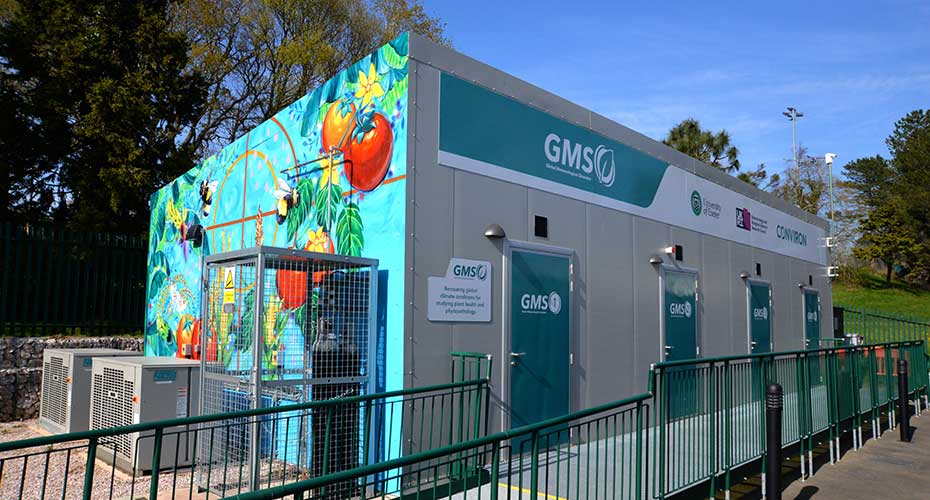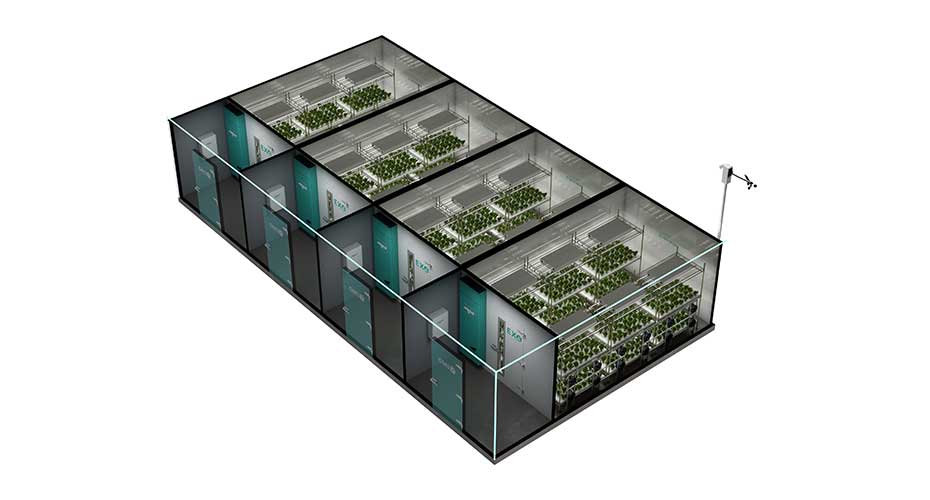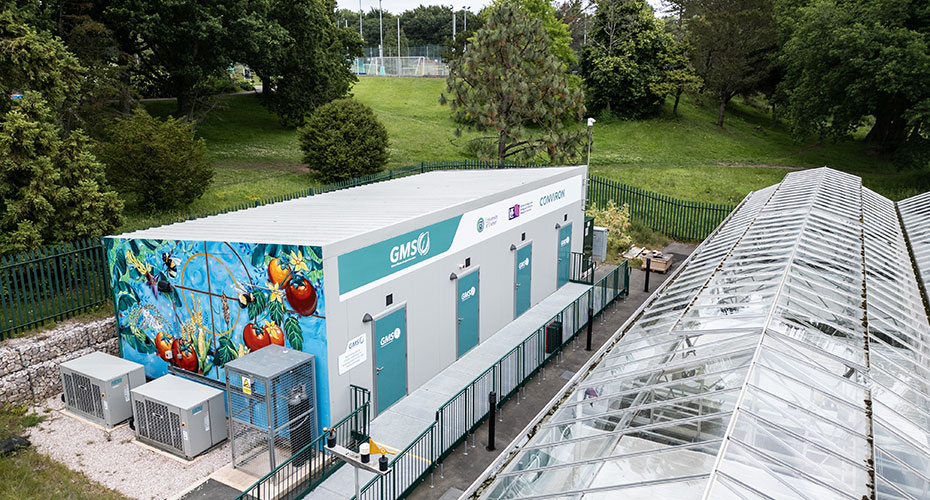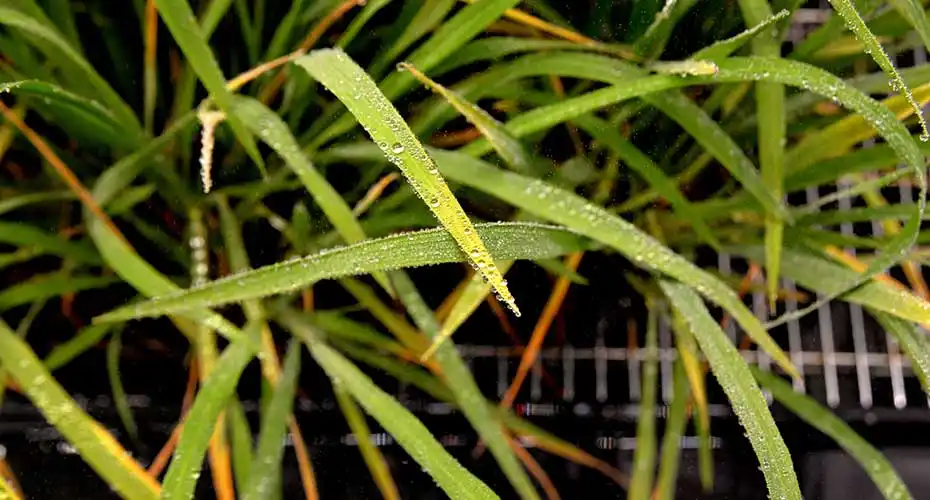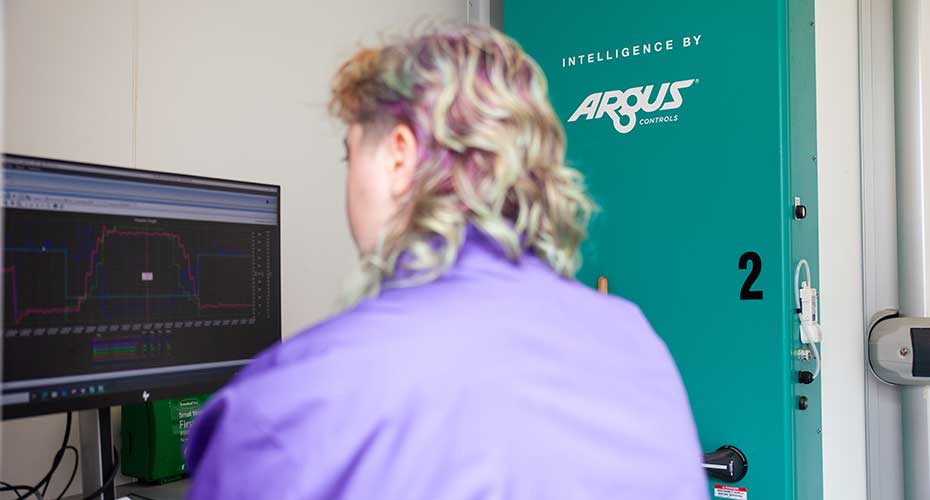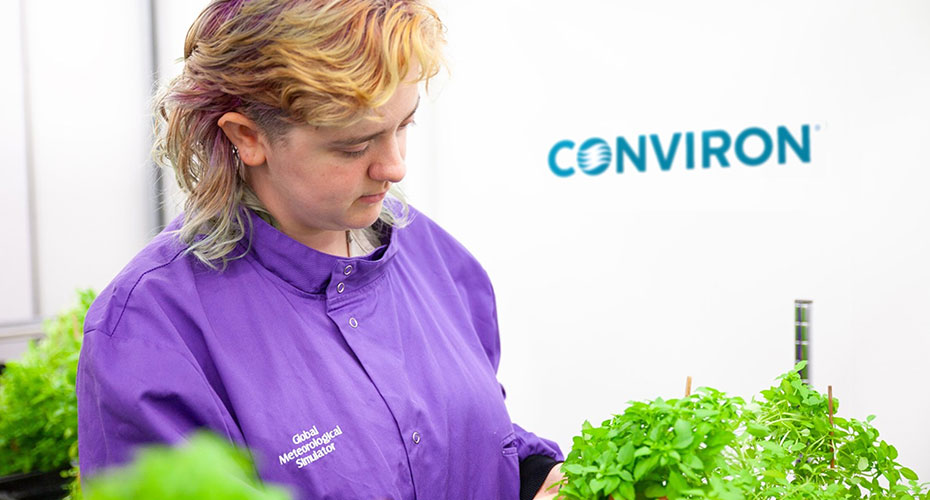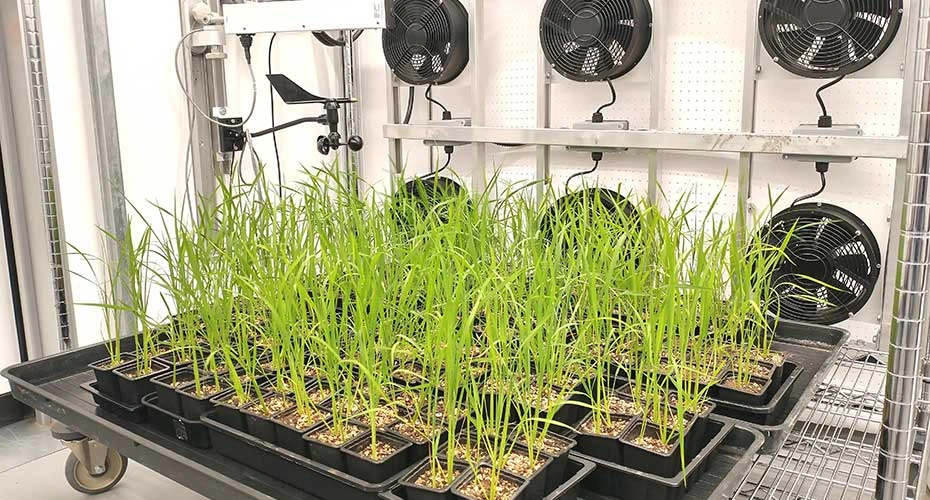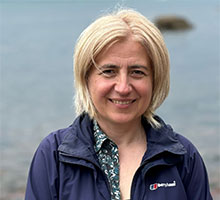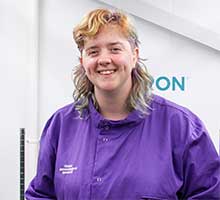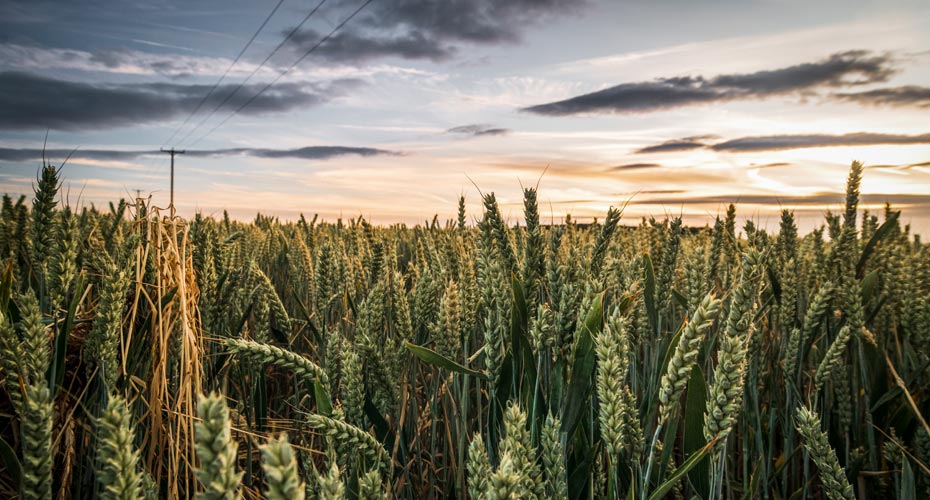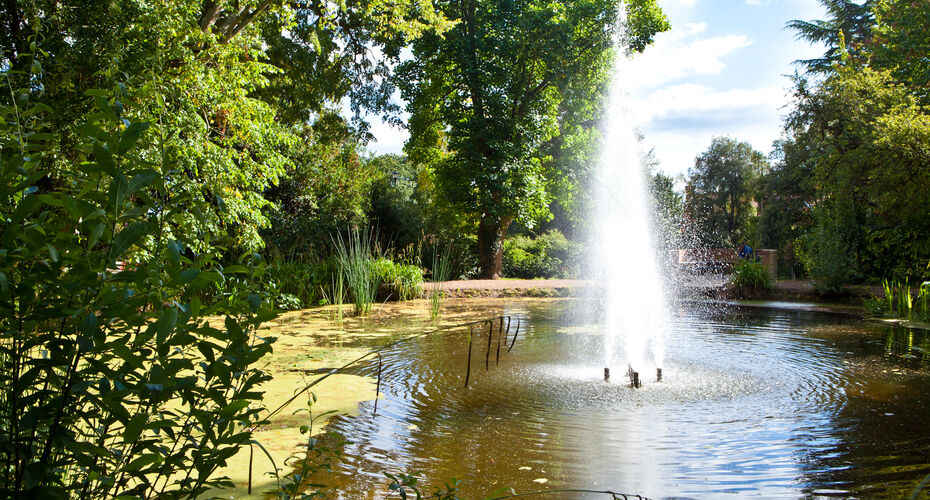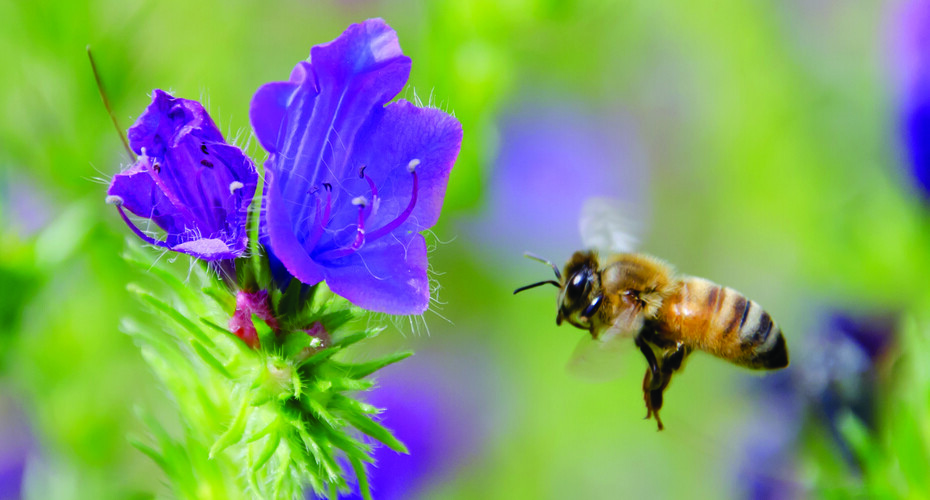Global Meteorological Simulator
The Global Meteorological Simulator (GMS) is a cutting-edge plant growth chamber facility designed to study plant health and disease under realistic weather and climate conditions.
Gaining insight into how plants and their interacting organisms respond to environmental factors is essential for addressing future food security challenges. Traditional plant growth chambers lack the ability to accurately replicate dynamic weather patterns, while field studies often struggle with control and repeatability. The GMS was purpose-built to overcome these limitations, providing a highly flexible and customizable platform for simulating diverse environmental scenarios. It supports a broad range of research—from plant physiology to intricate interactions between plants and pollinators, pests or pathogens.
- ITV Westcountry news bulletin on the launch of the Global Meteorological Simulator at the University of Exeter in July 2025
Facilities
The GMS consists of four independently controlled walk-in chambers, each capable of replicating a wide range of environmental conditions found in both natural and agricultural ecosystems, with a high degree of control and reproducibility. These conditions can be tailored using preset configurations or dynamically adjusted through the Argus control interface, which allows for real-time replication of data from global meteorological stations, including simulations of both historical and projected future climates.
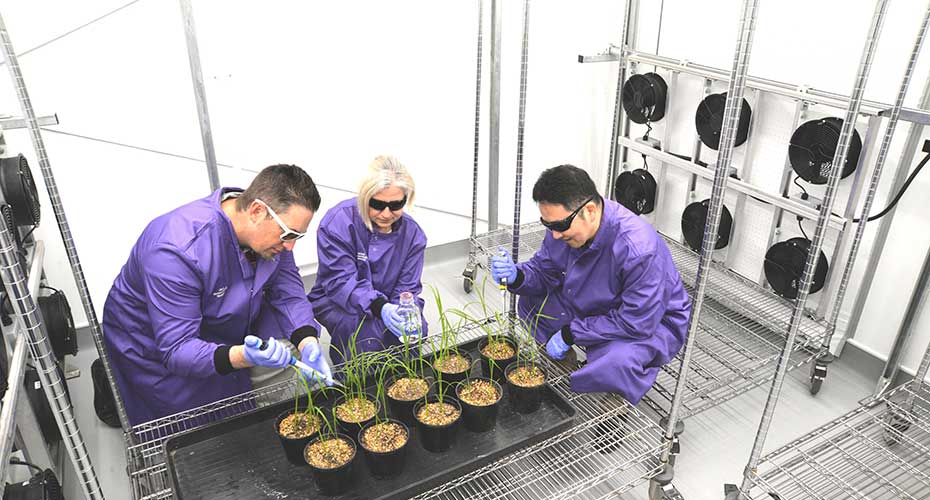
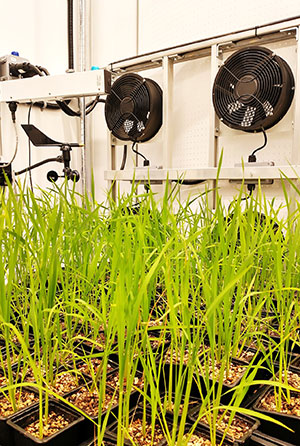
In addition to the advanced features typical of modern plant growth facilities—such as high-specification LED lighting and extensive relative humidity control—the GMS uniquely incorporates wind and precipitation simulation. These elements are critical for accurately reproducing environmental factors that influence plant physiology and interactions with other organisms, including beneficial pollinators and harmful pathogens.
Within each chamber, wind conditions are regulated using wall-mounted fans, while a ceiling-mounted gantry system delivers precipitation through a range of nozzles capable of producing droplets from fine mist to heavy rainfall. Carbon dioxide levels can also be elevated, enabling studies that reflect future climate scenarios.
- Four independently controlled side-by-side walk-in simulator chambers.
- Each chamber measures 3.3 m (w) x 4 m (d) x ~2.5m (h), permitting large scale studies.
- Conditions can be customized from an Argus Control interface, enabling dynamic control over timings, intensities, transitions and variations over diurnal and multi-day settings.
- Temperature range: from 4°C (dark) ~10°C (light) up to 35°C.
- Humidity: up to 95 (±5) % RH, enabled by an external high intensity air compressor.
- CO2: up to 2000 ppm.
- Wind: Gentle airflow (for thermal consistency) up to 20 km/h from adjustable, wall-mounted fan arrays.
- Precipitation: Variable droplet sizes and intensities, from heavy downpours to gentle misting, provided by ceiling-mounted spray nozzles.
- Lighting: High-specification LED configurations provide broad spectrum wavelengths, with tailored intensities (<1000 µmol.m-2.s-1) and supplementary far-red LEDs capabilities (important for plant physiology).
- Irrigation: Each chamber has freshwater inlets for plant irrigation needs.
- Electricity sockets: Supplementary power supplies are located within each chamber for additional experimental equipment.
- Ante rooms on each chamber, providing:
- Isolation from the outside environment
- Preparation area for experiments
- Hand-wash facilities
- Deionised water supply
- Waste disposal facilities
- Argus Controls can receive inputs from global meteorological stations to replicate real-world climates.
- Multiple internal sensors constantly monitor, adjust and record environmental parameters; and the Argus Control System can collect several million daily data points per controller.
- Contamination and containment control: External air inlets with HEPA filtration. Air exchange at 100 m3.h-1 ± 3 changes per hour. Negatively pressurised.
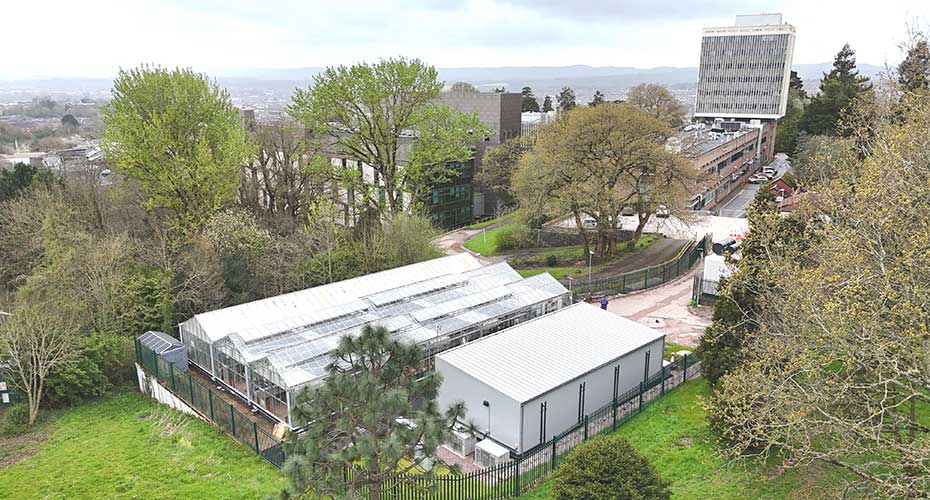
The GMS is housed within the plant growth compound at the University of Exeter’s Streatham Campus, adjacent to the newly refurbished greenhouses. This location provides convenient access to a range of additional facilities to support the GMS experiments, including:
- Plant-potting area
- Autoclaves
- Multiple plant growth environments with various conditions.
Meet the team
Examples of work
Contact us
If you have any queries that are not answered on these webpages, or you would like to discuss your project requirements further, please do not hesitate to contact us.
We can offer in-person tours of the facility, or provide further information on pricings.
Email: Admin-GMS@exeter.ac.uk
View gallery
